Span 55 cm / 22 in
Weight 25/40 g / 0.9/1.4 oz
The tandem wing model Twin Wing by Martin Brickner appeared first in Air Trails Annual of 1944 (scan of the magazine and the original plan). In my rendition I made some minor changes concerning external appearance and size. But character and unique silhouette of the original remained unaltered.
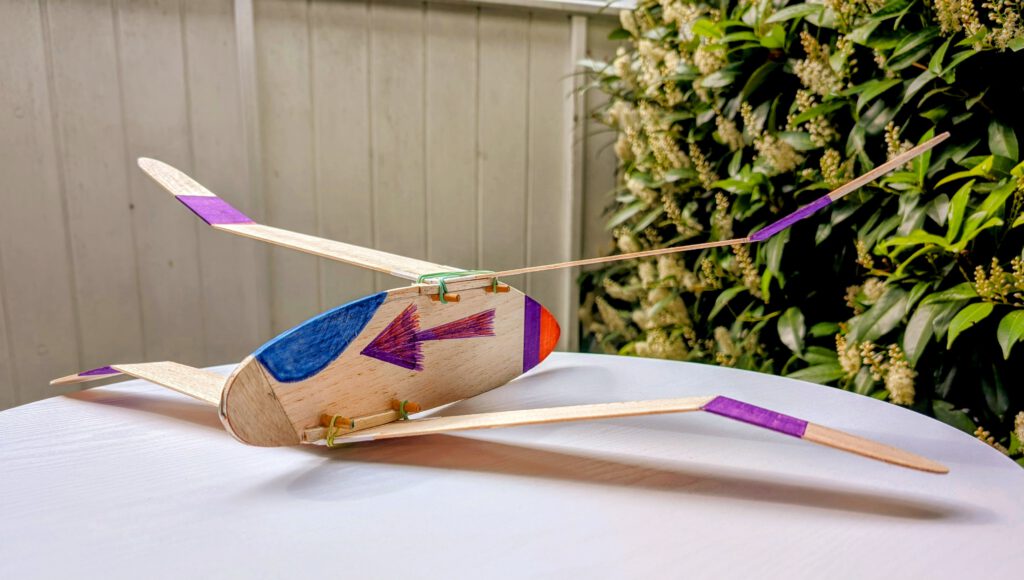
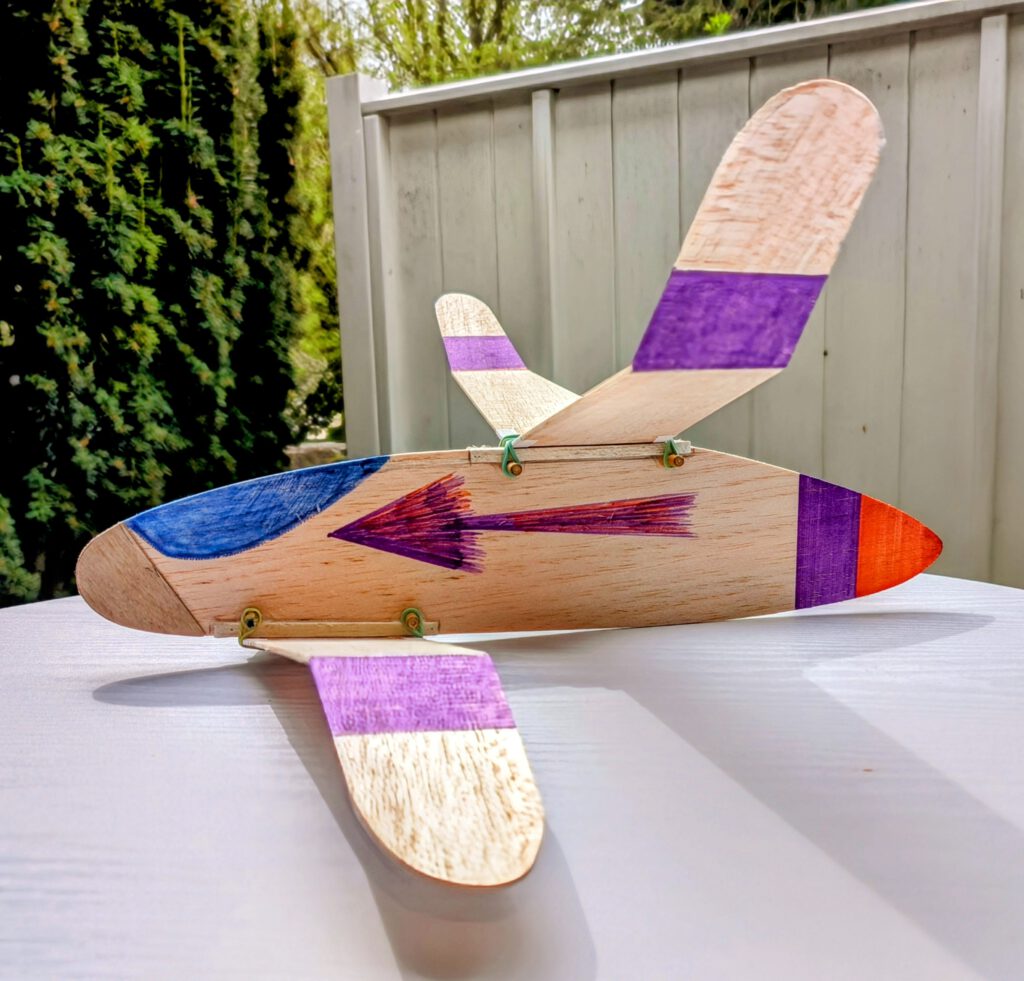
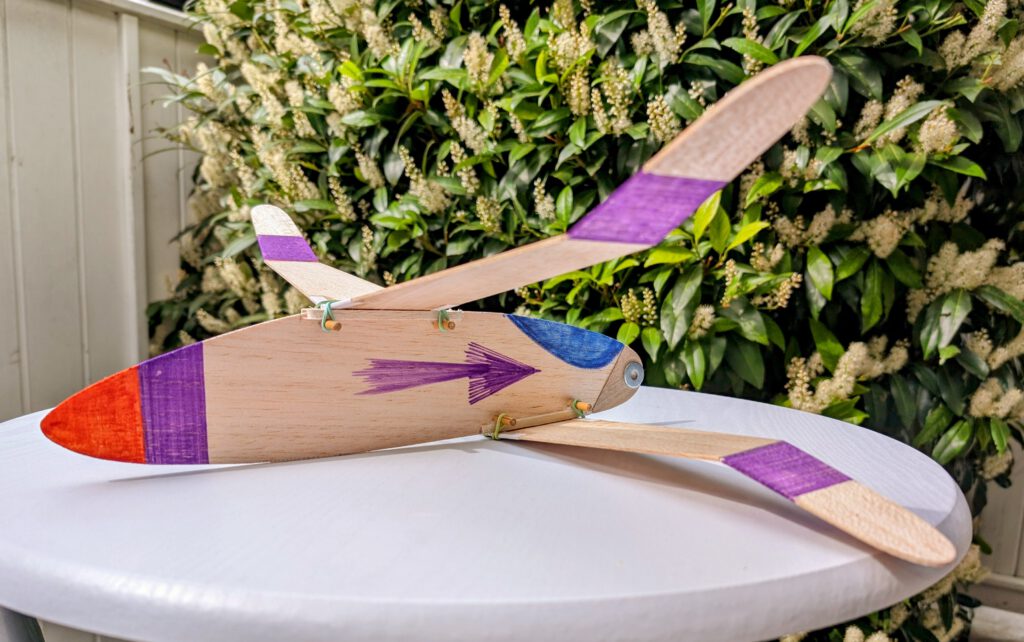

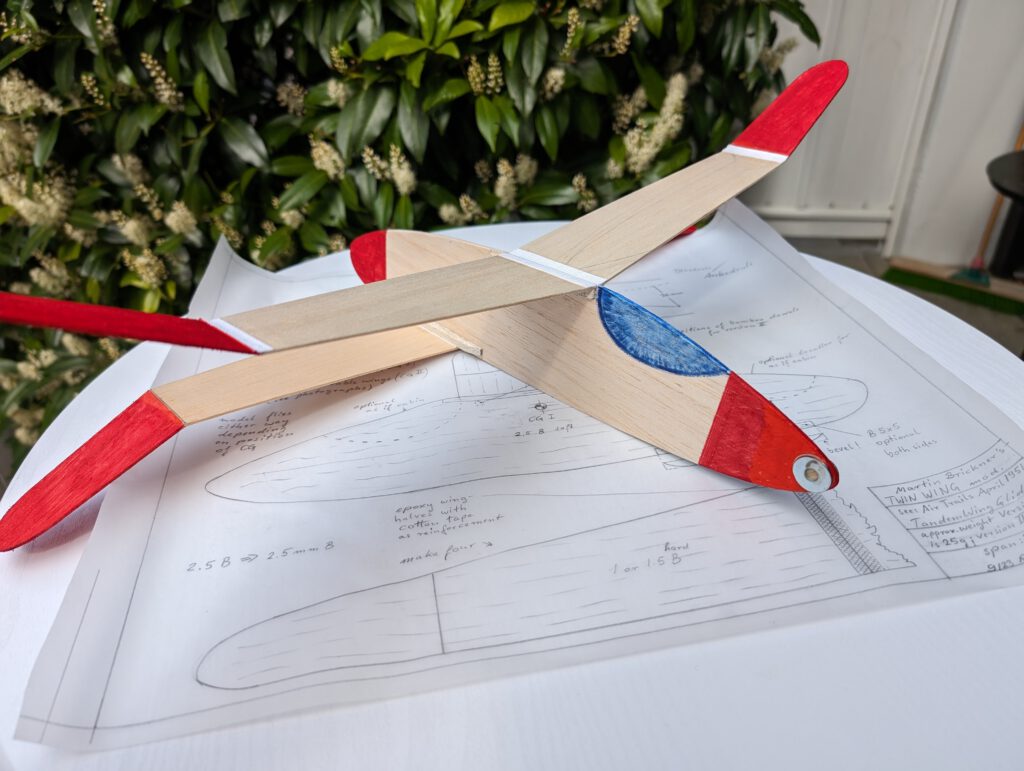
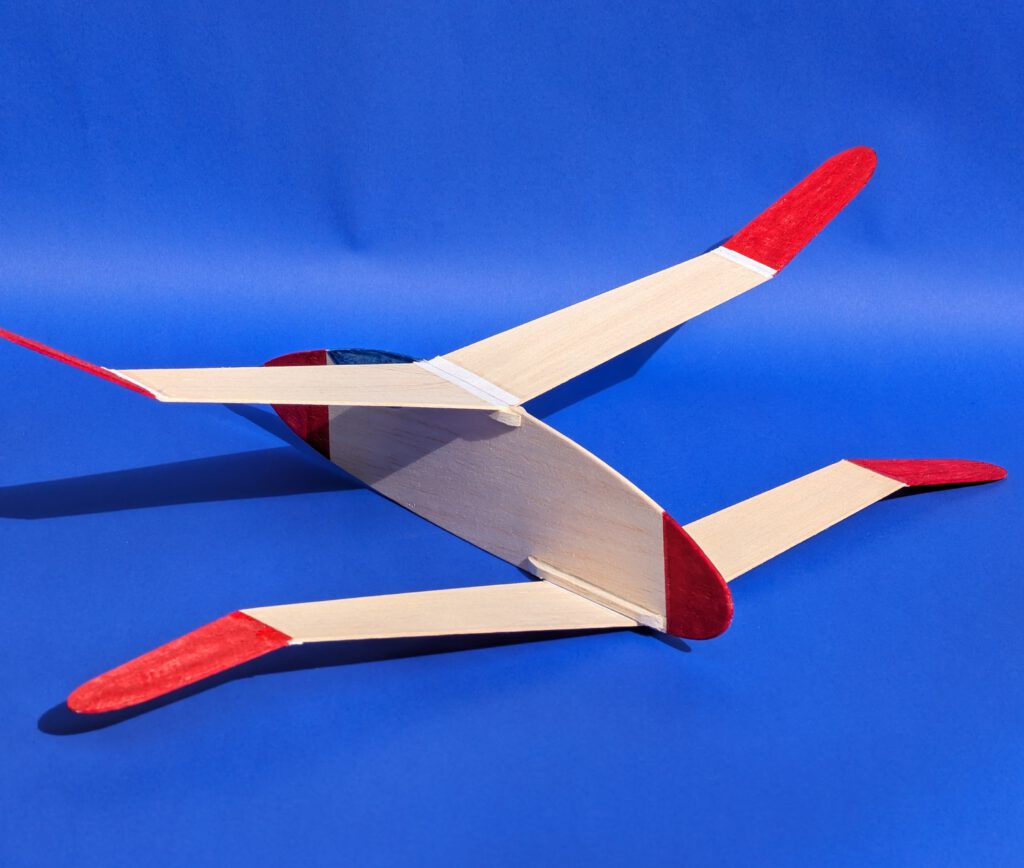
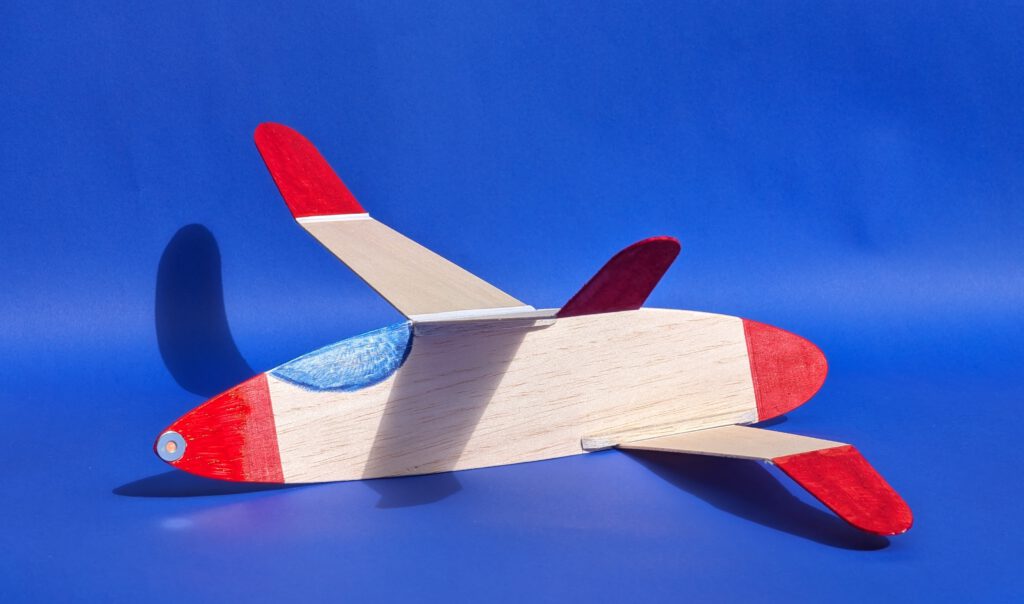
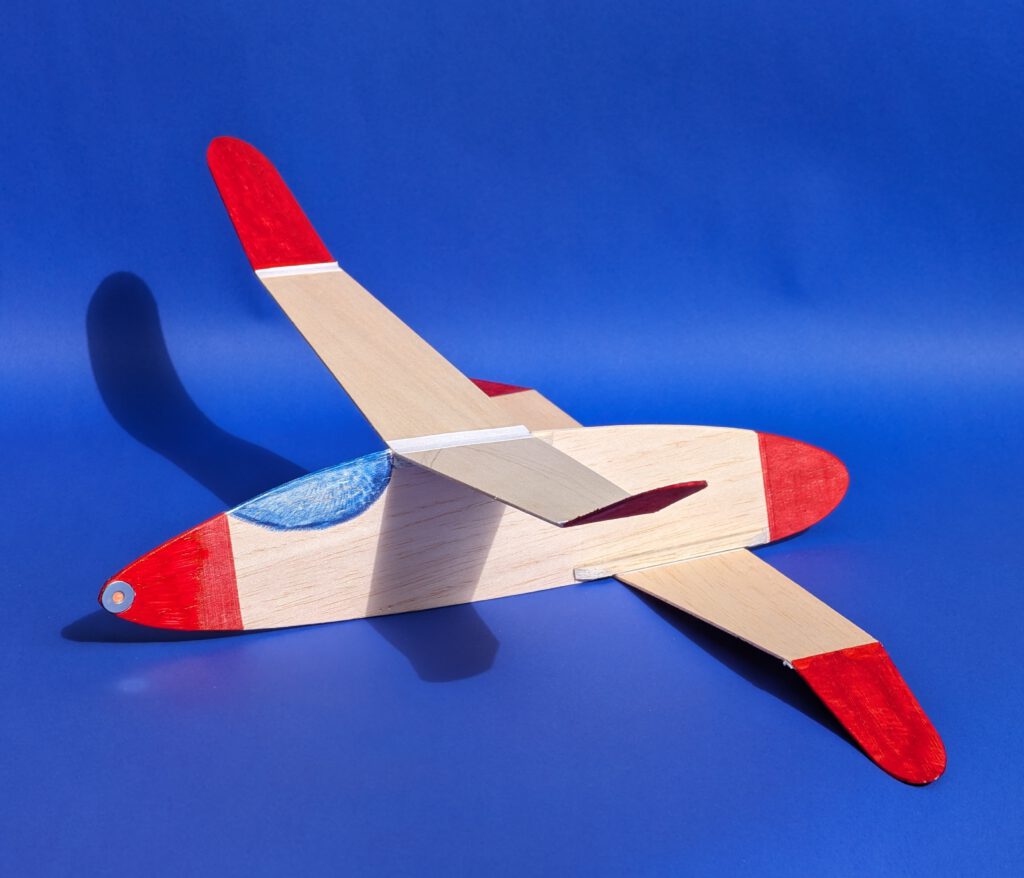
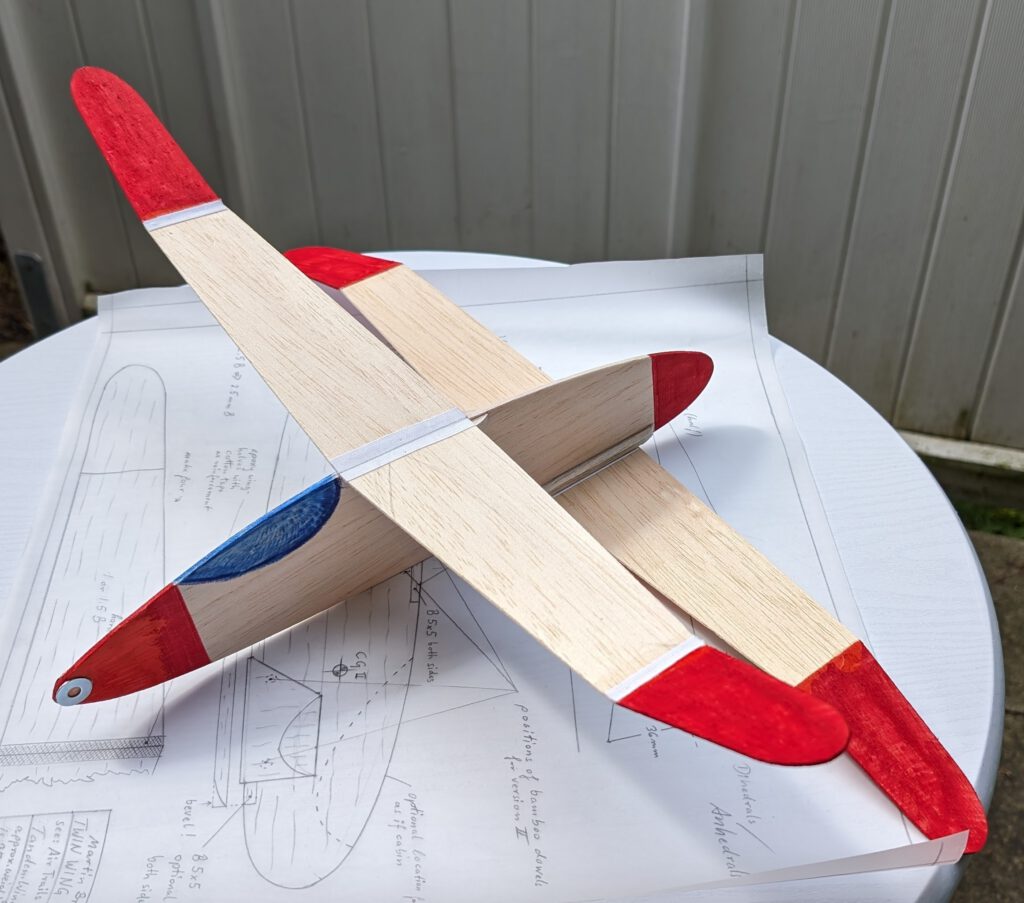
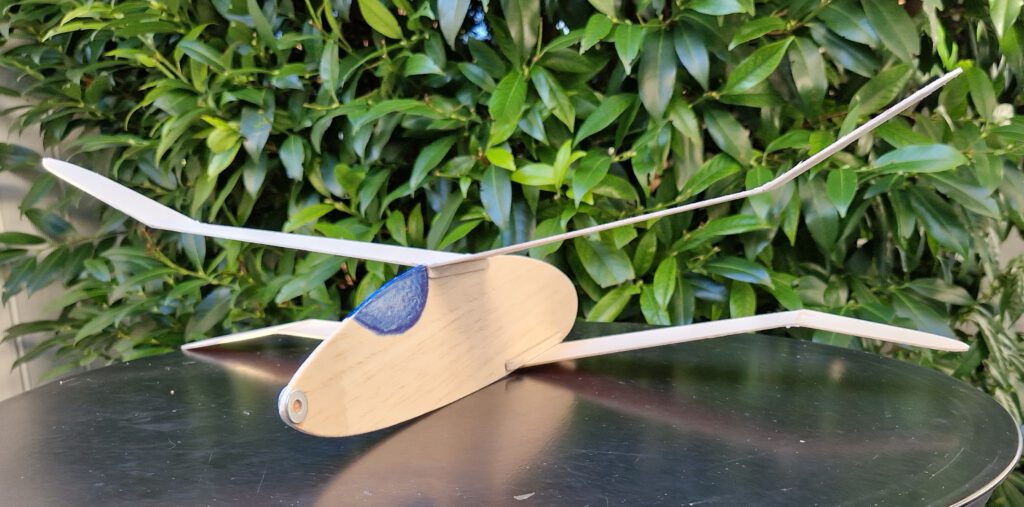
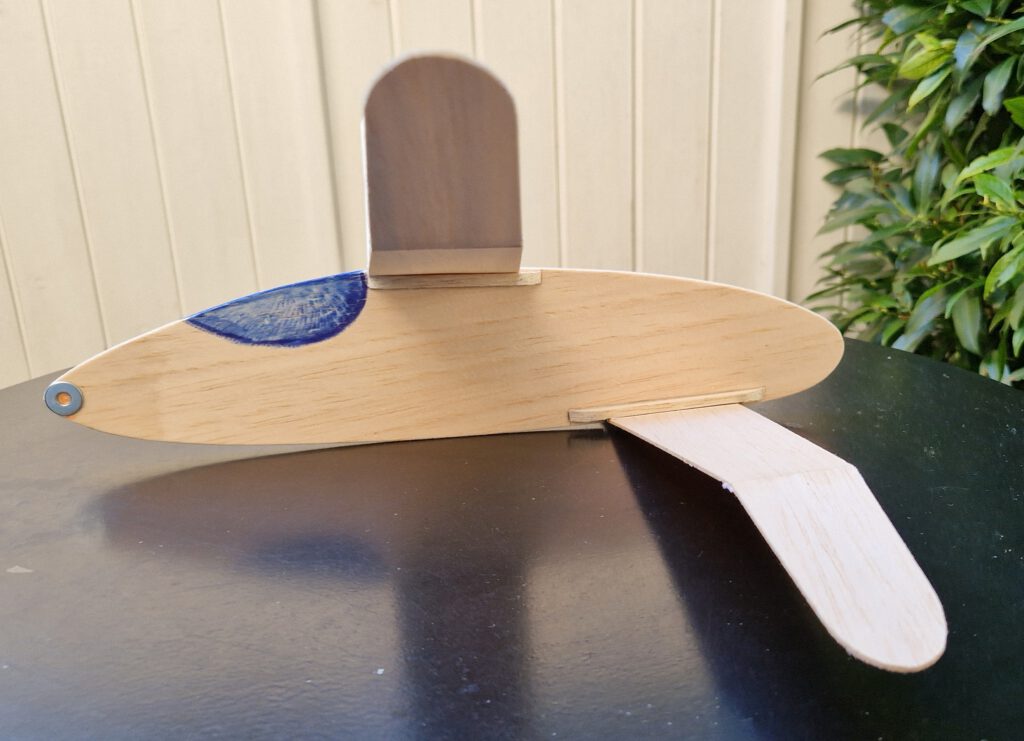
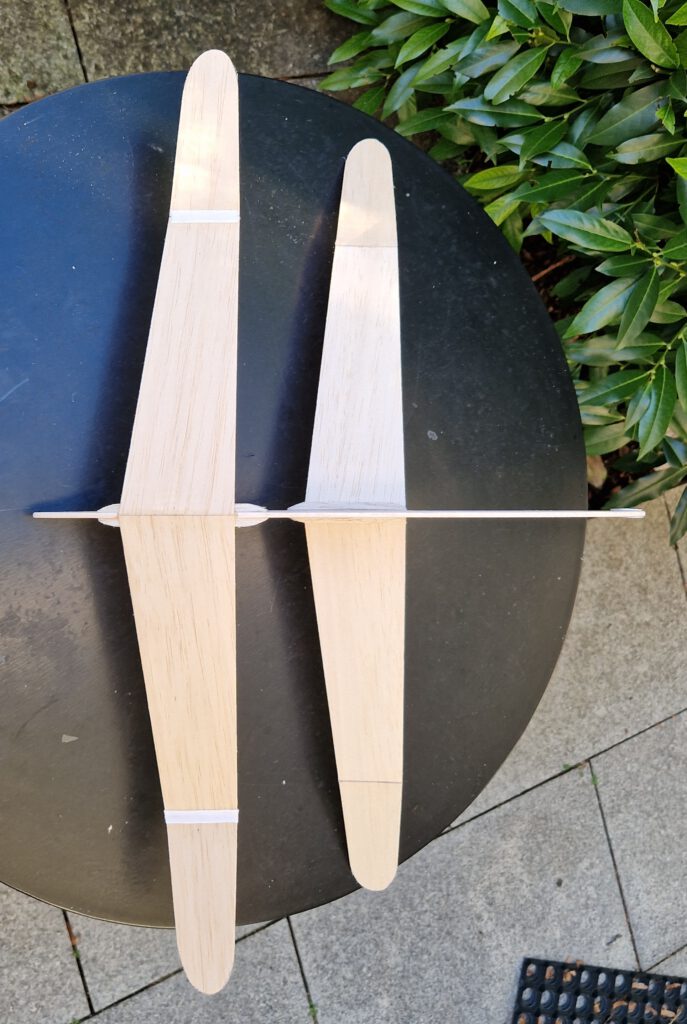
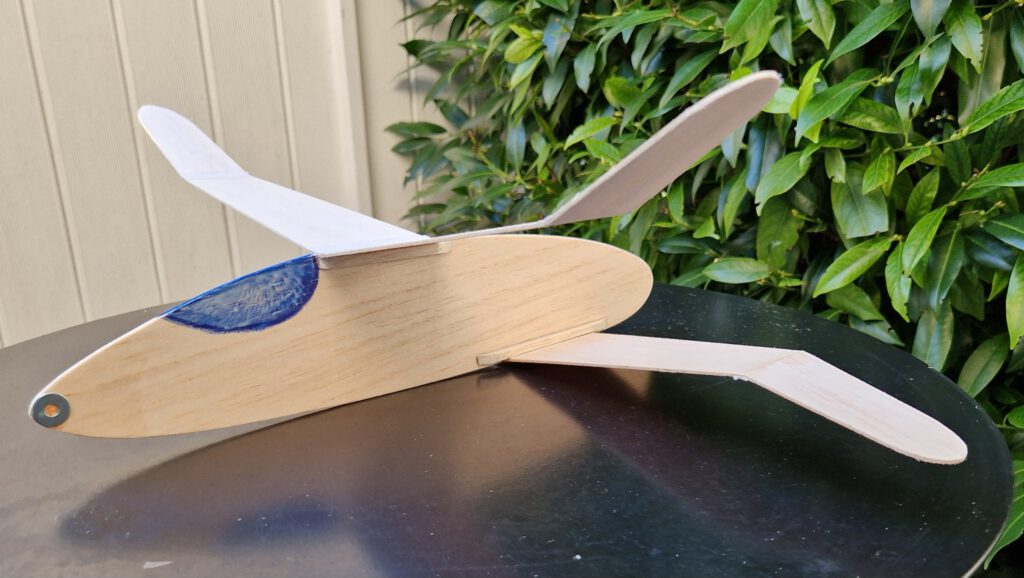
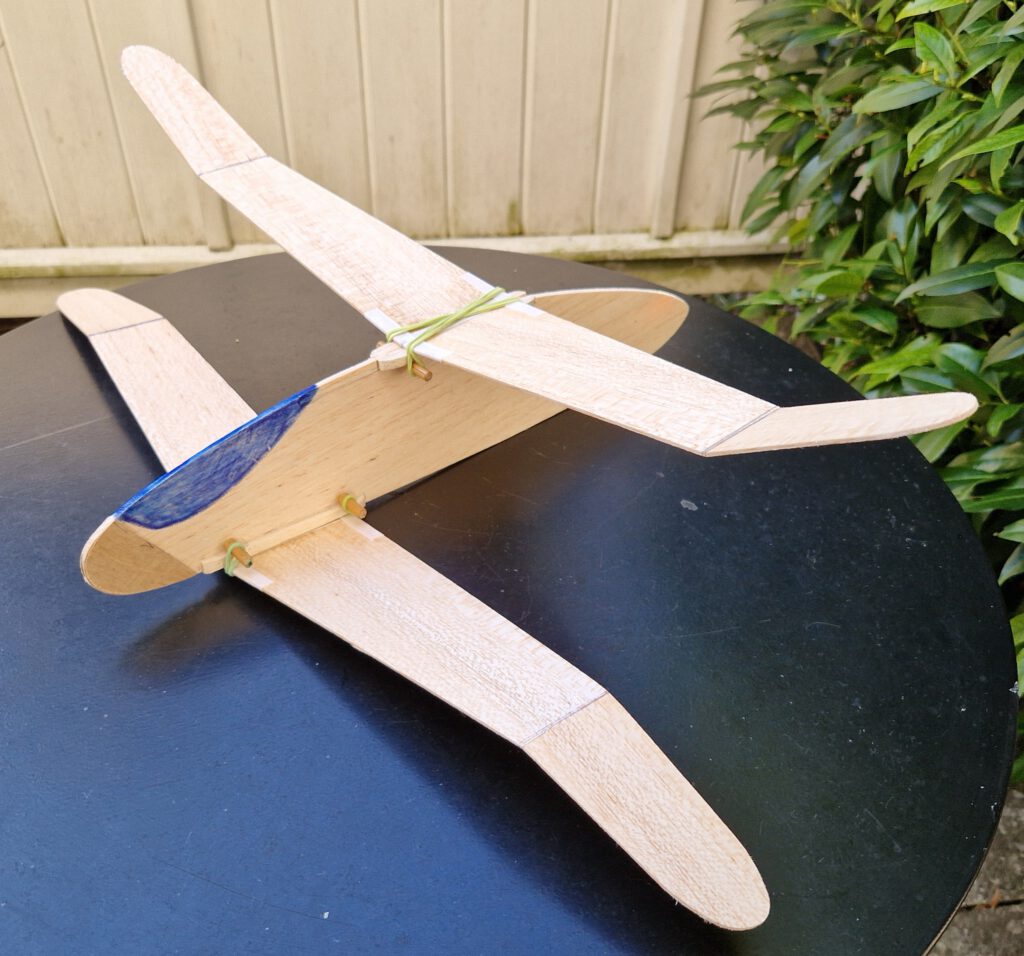
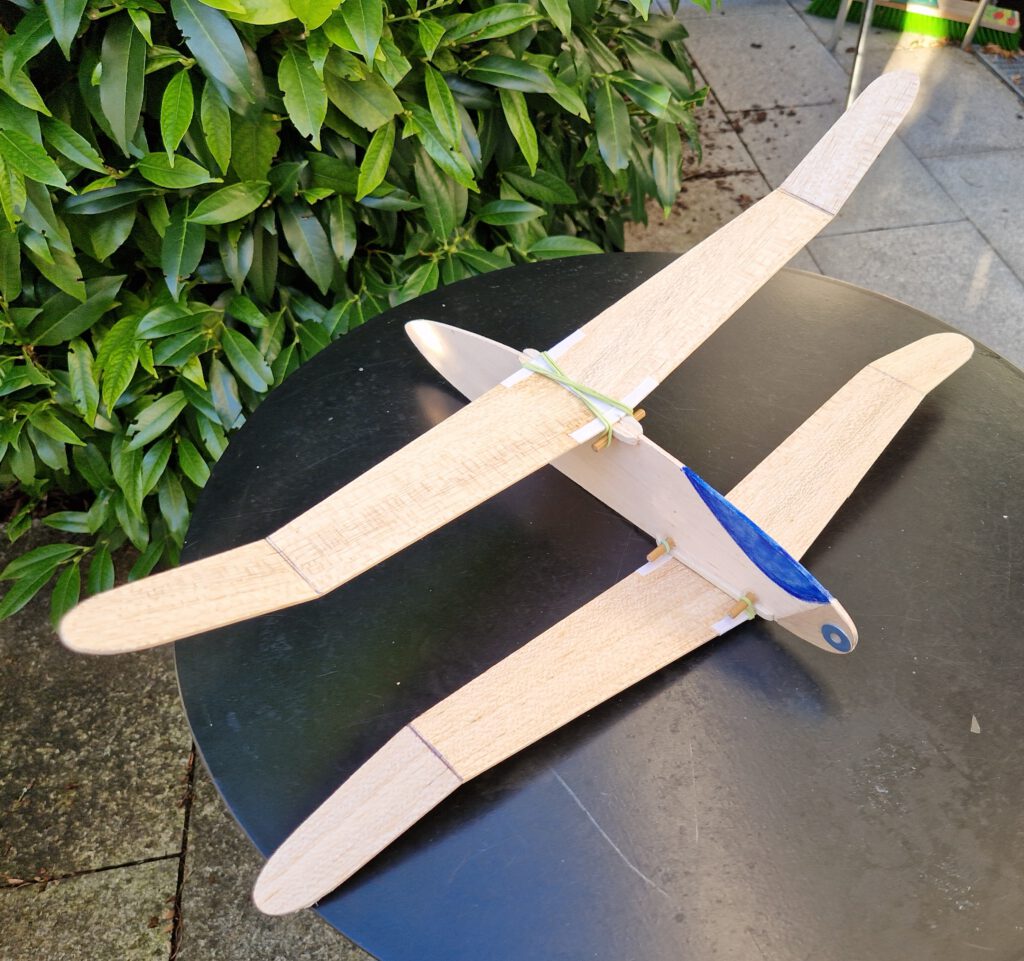
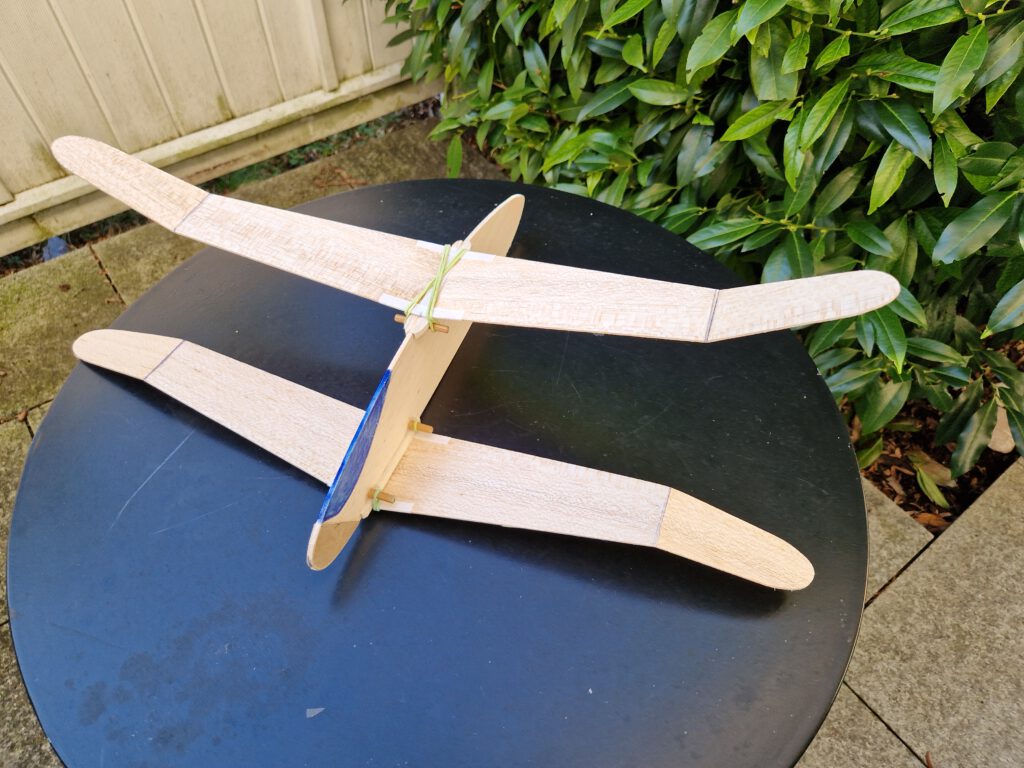
Building the balsa sheet chuck glider Twin Wing mod.
Note: The extra clou or peculiarity of the Twin Wing was and is – it can fly in both directions – only the center of gravity has to be shifted a little. To prove the concept and because I like experimenting I built two different variants. One with fixed wings like the original the other with detachable and reversible wings. Reversible means here the wing geometry alters as the wing planform is straight on one side and tapered on the other (see photos). As the wings are made of sheet balsa and have no profile, leading edges can become trailing edges and vice versa just by reversing the wings.
Materials:
Fuselage: B 1.5 and B 2; wing supports: B strips 5 by 5; wings: strong B 1; Ballast: small piece of lead or scrap metal.
The version with detachable wings has a B 2 fuselage.
Assembly:
Cut out all balsa parts according to plan. Sand well. Transfer outlines of cockpit from paper to wood with pen. Paint if desired at this stage.
Wings:
Fix one wing half on building board with needles. Underlay wing tip according to given dihedral and cement (see photo). Let dry. Repeat procedure with other wing half. When dry join both halves. Linen tape can be used to strengthen wing center (photo). Version with detachable wings needs strengthening at those areas where rubber band sits. So use linen/cotton tape as shown on photo for this purpose.
Fuselage:
Cement wing support strips in to their place on both sides of fuselage (photos) using clamps or clothespins. Add bamboo dowels for variant with detachable wings. Fuselage nose of this version was strengthened with thin pieces of plywood on both sides thus hiding the ballast (photo).
Final Assembly:
For version with fixed wings: Cement wing into fuselage cutout using needles to hold in place (photo). Remember to visual check from all sides as obtaining symmetry should be your main aim at this step. Now repeat this procedure with second wing. Use so called „third hand“ to facilitate building (see photo). Let dry.
Balance model in accordance to given CG on plan.
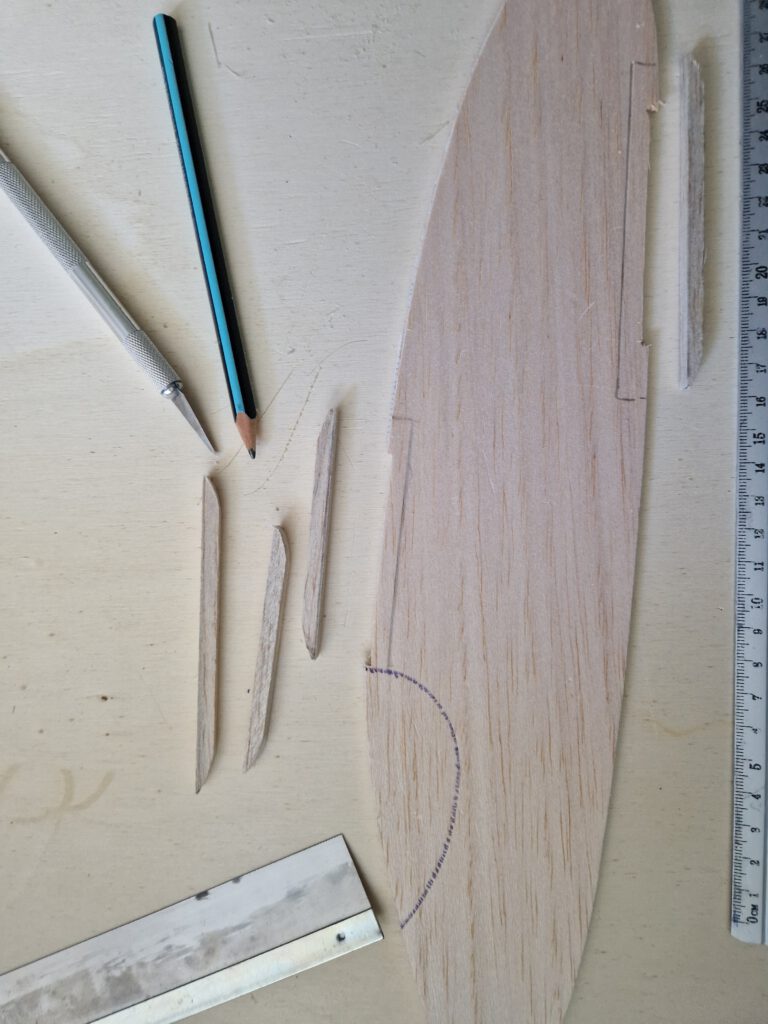
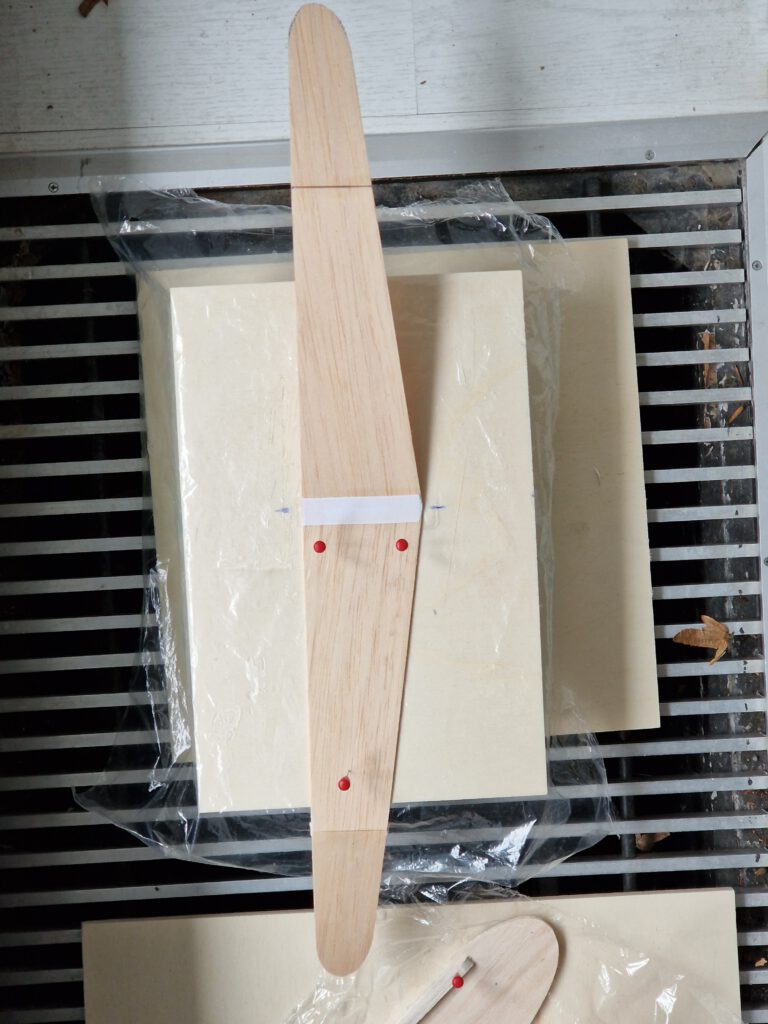
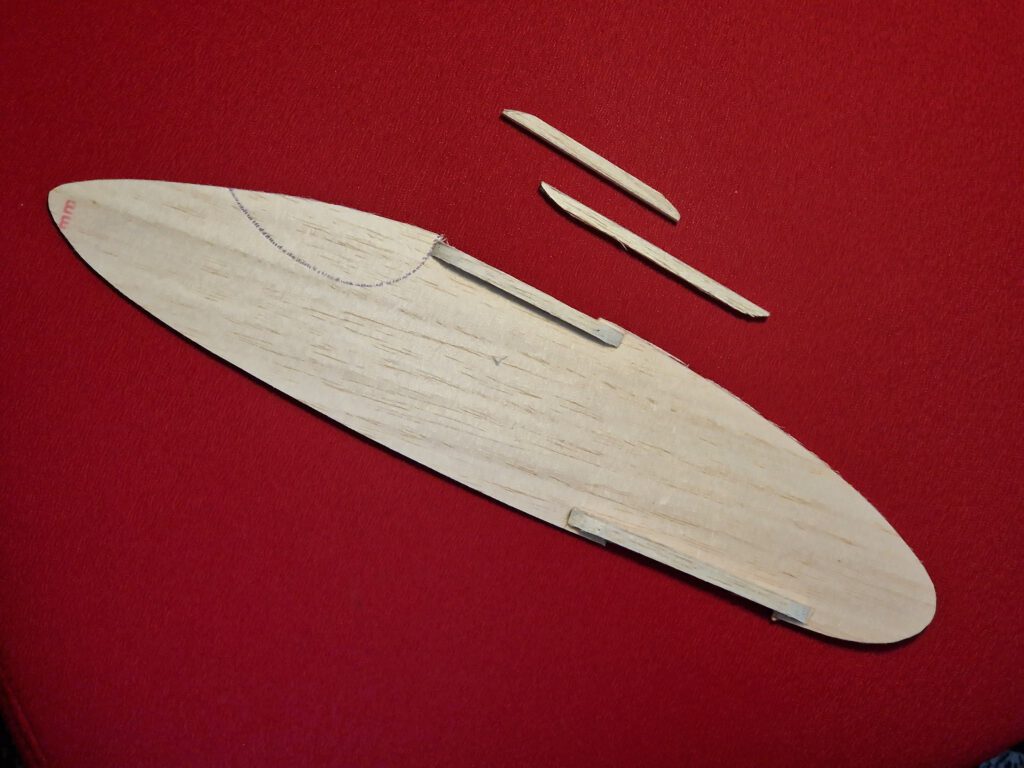
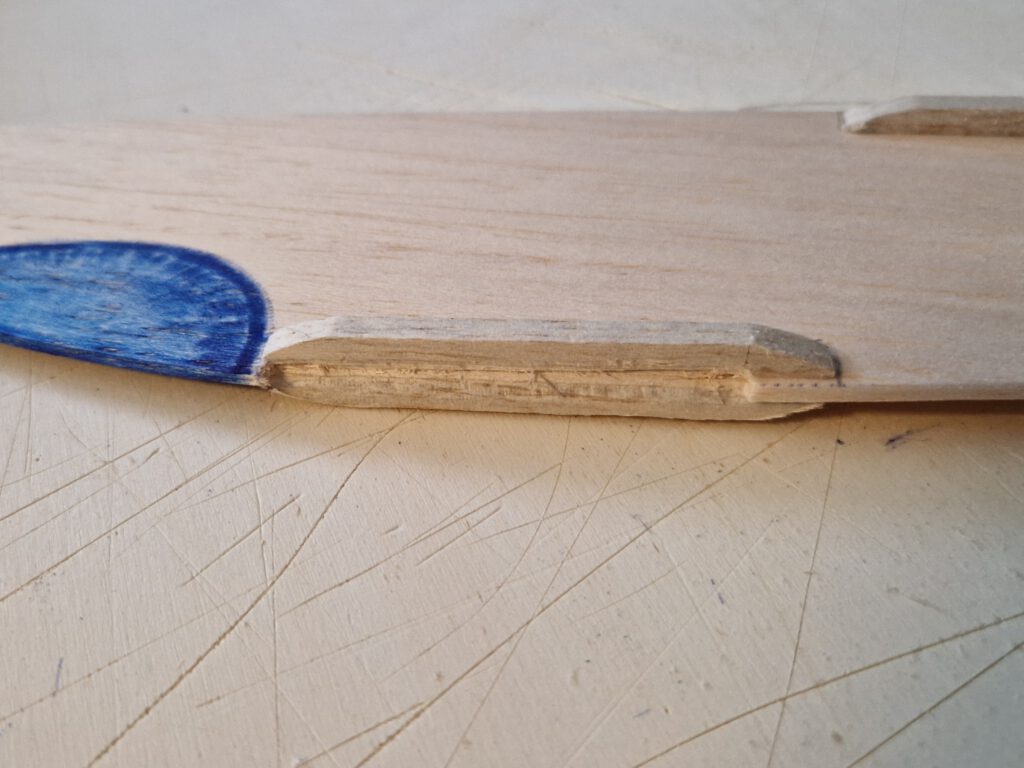
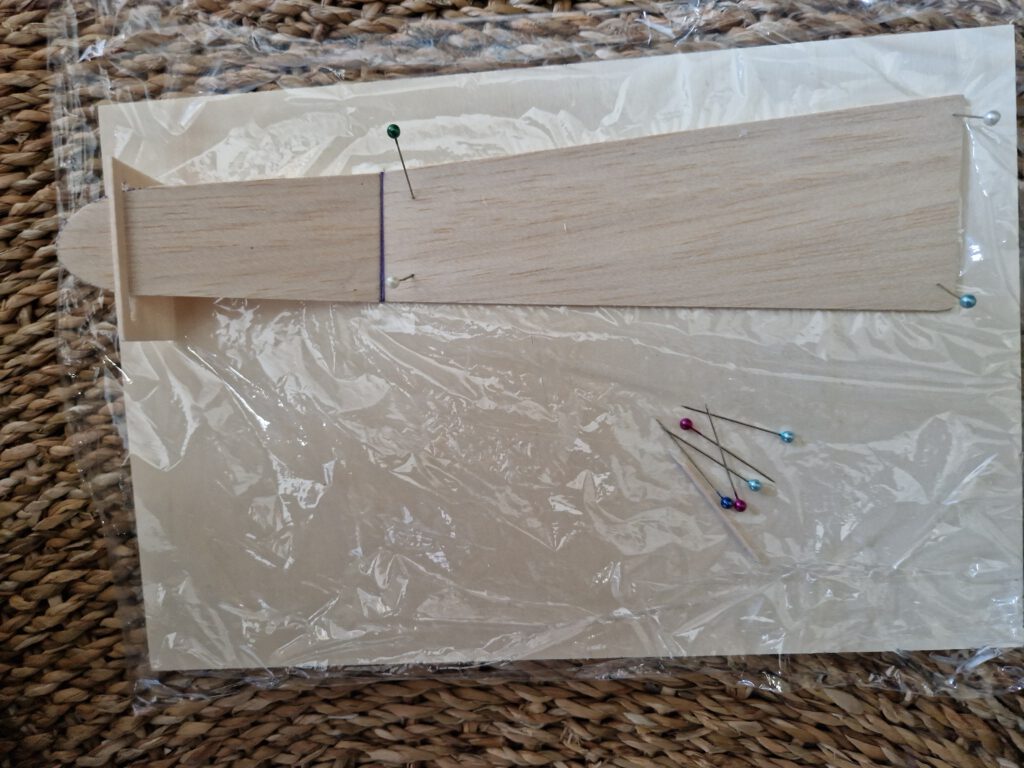
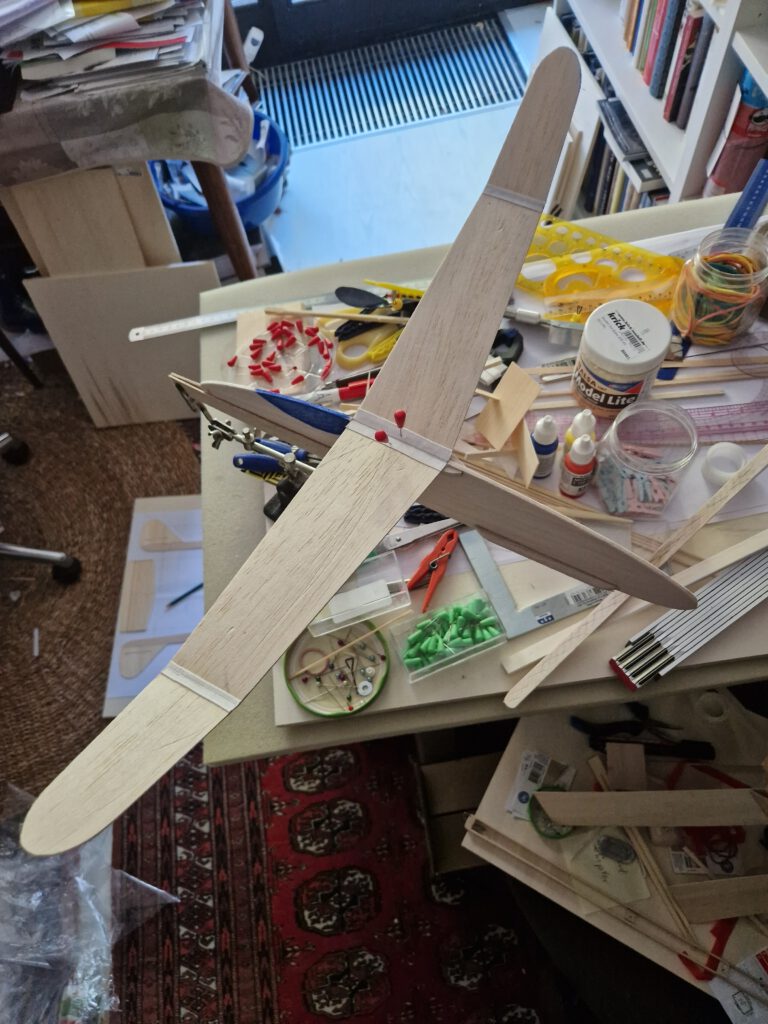

Buon volo! (miłego lotu!)

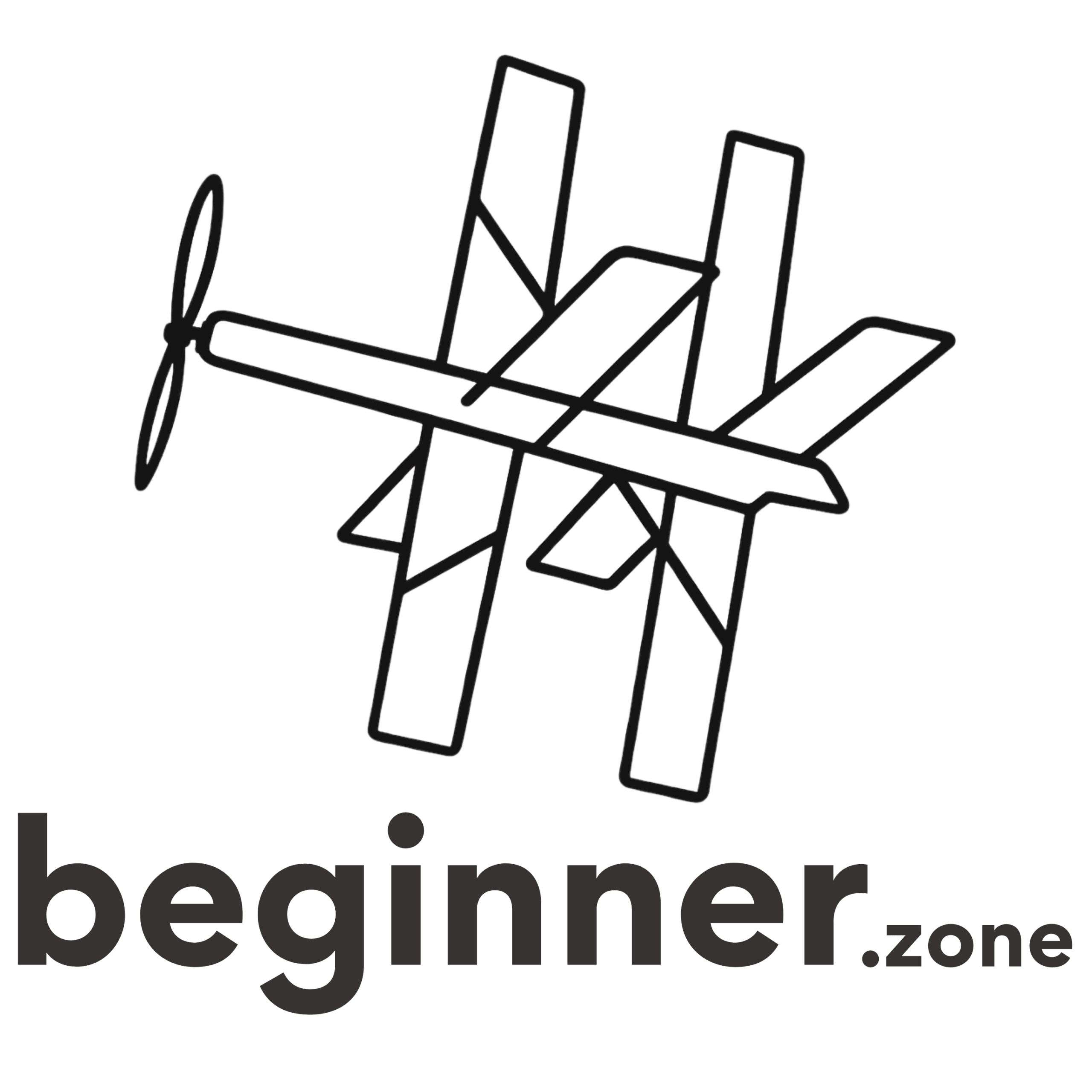
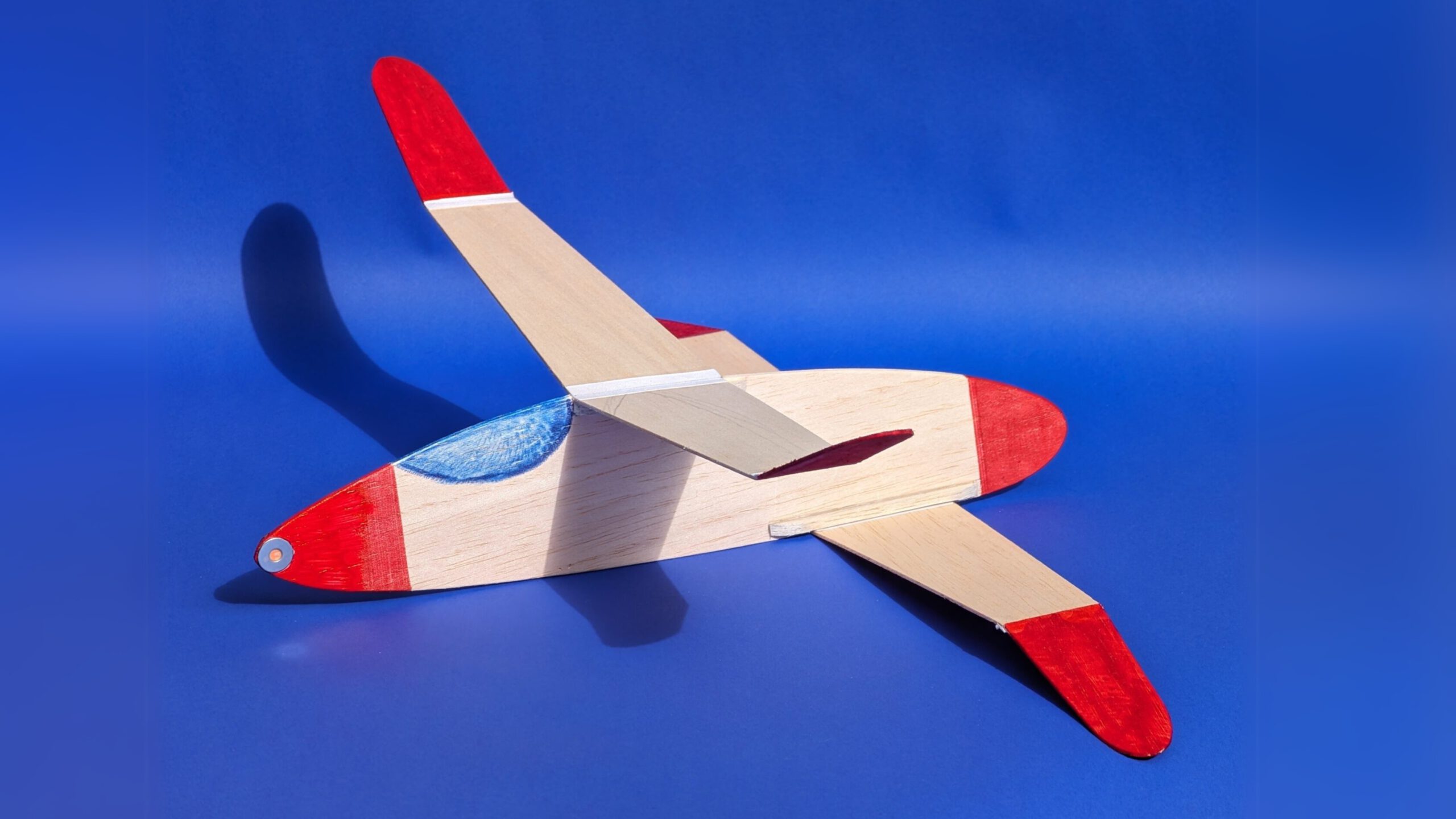
Leave a Reply